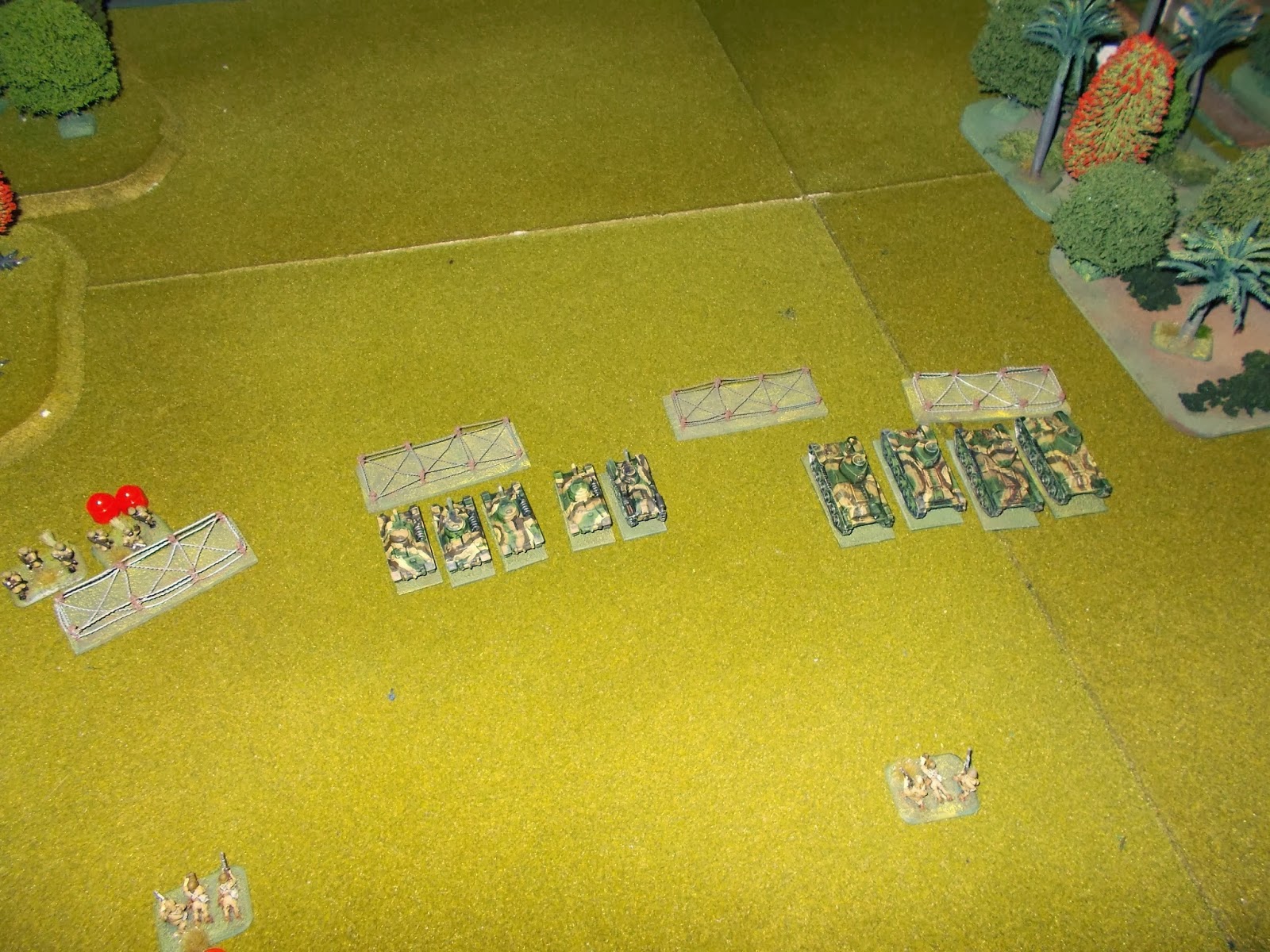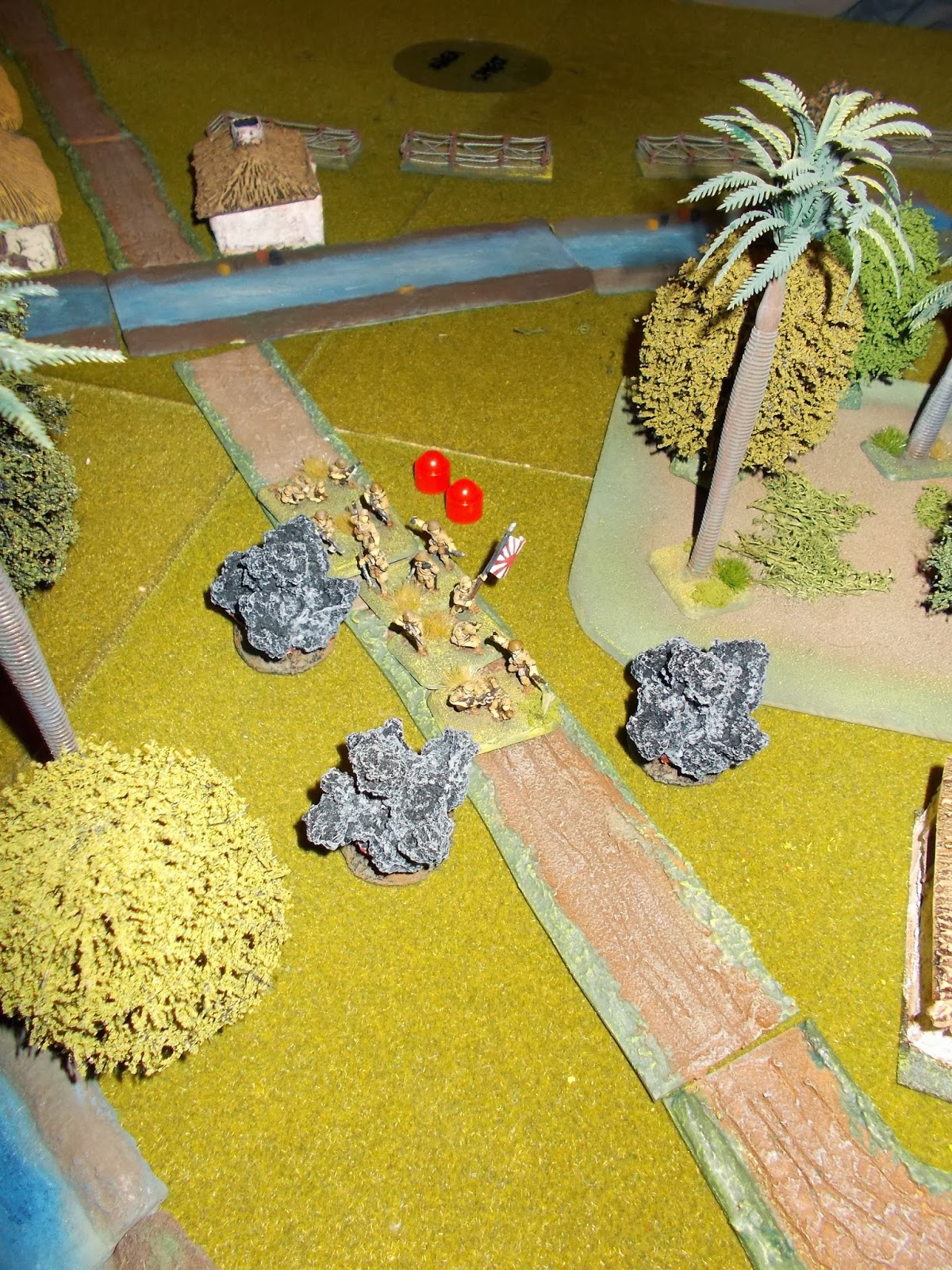The Battle of Jitra 11-13th December 1941 AAR
After the defeat of the Gurkhas at Asun, the Japanese Saeki Detachment continued their unopposed advance down the main road towards the strategically important town of Jitra. Here the British had begun building defences north of the town before the Japanese invasion of Malaya, but these were incomplete when the 11th Indian Division moved back to the position on the 8th of December. It was still in an uncompleted state when the Japanese force attacked in the early evening of the 11th. This attack was initially blunted, but a renewed assault early on the 12th started the battle proper which lasted until the British forces were given permission to withdraw further south to Gurun on the night of 12/13th December.
Previously the Japanese forces controlled by Dean had already defeated a small British force at both Changlun and Asun, however at Jitra they faced a larger defence of three battalions, namely: 1st Leicesters, 2/9th Jats and the 2nd East Surreys. There was also support from two 25lbers that were firing from off board positions. The 2/9th Jats held my right flank from the road to the eastern high ground. To the west and holding the east of the village of Maggoi were the 1st Leicesters and on my extreme western flank were the 2nd East Surreys. All were placed in defences and behind barbed wire.
The remaining troops of the Japanese Saeki Detachment were joined by a fresh battalion of soldiers, which considerably bolstered the force which had suffered quite heavily at the previous engagement at Asun. The conditions for victory remained the same, the Japanese had to plough through the British lines and reach the southern board edge within eight turns. The British defenders had to stop them by any means possible.
The initial set-up looking from the west (above) and the east (below).
In a change of tactic, the Japanese units decided to use their heavy firepower to shift the British defenders by dropping knee mortars rounds and rifle fire on the defence line. They took a few casualties themselves as the British returned fire.
The 2/9th Jats on the west took heavy casualties from a combination of mortar, rifle and tank fired high explosive, but remained in their positions.
Then came the British turn to use high explosive as the battery of 25lbers opened up and dropped shells on the Japanese positions.
Meanwhile, the Japanese held back on the west and continued firing at the Indian positions, the headquarters was soon wiped out, taking with it the Boys AT Rifle and battalion mortar!
The 1st Leicesters were also suffering a similar fate with their defence line crumbling under the withering Japanese fire.
More 25lber fire landed on the Japanese command, but had little effect.
And finally the tanks moved off their starting positions with a slow rumbling advance towards the dug-in Indians.
I could see that my entire defence line was in jeopardy and there would be nothing to be gained from sitting on the defensive in the current positions, so the 2nd East Surreys fell back from the village of Manggoi towards Jitra itself.
The tanks came on unopposed and caused more casualties on the Indian soldiers, who clung on to their positions desperately.
With the destruction of the British defence outside Manggoi the Japanese infantry also joined the advance and over ran the British lines.
The situation north of Manggoi was dire from the British point of view.
The Surreys continued their desperate rush to get to better defence positions at Jitra, but it seemed so far away.
The Japanese soldiers charged down the road joining Manggoi and Jitra and some rifle fire was exchanged between them and the British troops further down the road.
Japanese were also swarming down the main road towards their objectives.
Meanwhile, the tanks overran the Indian positions on the east.
My forces were being squeezed to the south by the Japanese juggernaut.
The leading elements of the 1st Leicesters reached the outskirts of Jitra and headed for the comparative safety of the buildings. The remainder of the battalion rushed to reach the south of the village.
Continuing the advance the Japanese tanks pushed on further and further beyond the British lines. It was only a matter of time now and all i could hope was that the river would slow their advance.
The race to Jitra was still being hotly contested as a large amount of Japanese soldiers rushed down the north-south road.
Firing as they went, the Leicesters continued to exchange rifle fire with the pursuing Japanese.
The remaining Jats were finished off by machine-gun fire from the Japanese tanks, firing their rear facing machine guns.
A British company took up positions in the buildings in the village of Jitra, whilst the headquarters and other companies exchanged more fire with the Japanese. Again, the Japanese turned to grenades to try to shift the defenders from the buildings.
The final rounds of 25lber fire were called in and landed on target, right on top of the Japanese infantry, smashing them heavily.
But it wasn't enough to stop the tanks on the east, who had forded the river to reach the southern base line right on the last turn of the game.
It was all over, the Japanese had crushed the British opposition and pushed through and beyond Jitra. They seemed unstoppable at this stage.
So, the end result was a total Japanese victory, even though the British defence had been tenacious. I think in hindsight I should have moved the Leicesters to a better position earlier, but it didn't really occur to me to do so and I lost the chance to defend Jitra better. I guess this was down to the short-sighted idea that they were already in prepared defences.
The Japanese units were an incredibly difficult force to contend with, both their firepower and assaults are formidable and it was interesting to see them used in different ways in each game. Dean and I both learned a lot over the three initial games and this may change how we play as the campaign progresses. The next engagement took place at Gurun on the 14/15th of December and that is the next game, but for now, thanks for reading!





























Bloody good read.
ReplyDeleteCheers Fran, I'm glad you enjoyed reading about it was much as we enjoyed playing it! There is more to come, we just have to find time to sit down and play.
DeleteNice looking game, this river is really impressive on the table...love the village!
ReplyDeleteThanks Phil, I'm glad you liked the AAR. The river is a pre-paint job that I bought from Magister Militum, many years ago, but yeah, it's a nice terrain piece! The village, on the other hand, is scratch built.
Delete